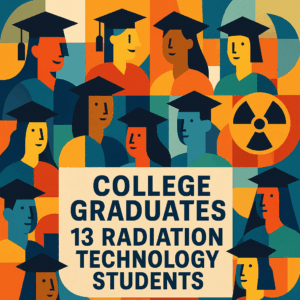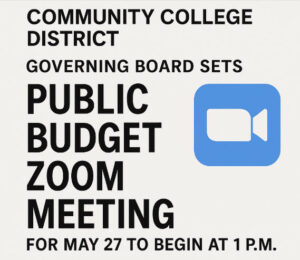The Blog does not post to YouTube, X (formerly Twitter), or any other external platform, and it has not authorized anyone to use its name, content, or images without express written consent.



Commentary by Robert E. Oliphant
Opinion: With a simple flick of the wrist, Yavapai Community College executives have repeatedly snuffed out promising Sedona and Verde Valley programs—programs that were once heralded as transformative—only to redirect resources and opportunities to Prescott. The result? Millions poured into Prescott’s coffers while Sedona and the Verde Valley watched their dreams of robust local education wither.
In 2000, hope surged across Sedona and the Verde Valley as citizens approved a $69.5 million bond for Yavapai Community College, envisioning that a tiny part of those millions would be spent on creating a Regional Career and Technology Education Center (CTEC) on the Verde Campus in Clarkdale. A federal grant of over $1 million further fueled excitement. College officials promised transformative workforce development:
“[The CTEC] will provide much-needed educational space and resources to further develop job training programs… This is an exciting and unique opportunity for northern Arizona residents to gain work-related skills that will allow citizens to seek immediate employment or increase their level of income.”
But while the Center promised to upskill workers for both existing and emerging industries, it needed care and cultivation—neither of which came from the Prescott-centric leadership.
Just as the fledgling center was attempting to take root, Yavapai College abruptly undercut the effort. This occurred in April 2007, when College leadership authorized purchasing a massive 108,000-square-foot building in Prescott for its Career and Technical Education campus (CTEC). The Verde Valley center was then shuttered before it could mature, while the future of technical education was diverted over Mingus Mountain. The excuse for abandoning the Verde Valley? Alleged low Verde Valley student interest—a claim all too familiar to this region.
This instance signals the start of an ongoing pattern of aggressive and opportunistic decision-making that has defined Prescott Community College leadership ever since.
Next on the chopping block: the nationally renowned Zaki Gordon Film Institute, opened in 2000 in Sedona in partnership with Yavapai Community College. Demand was immediate and overwhelming—500 students clamored to enroll in a program designed for 100. Plans were made to acquire up to 80 acres from the Coconino National Forest to accommodate the surge.
Keith Harwood, a Yavapai official, acknowledged the crisis:
“We’re bursting at the seams… We expected 100 students, and we have 500.”
Yet, the expansion never materialized. While the Film Institute thrived, gaining international recognition, its success was short-lived. A public dispute between Yavapai College leadership and the Institute’s founder, Dan Gordon, over management and curriculum changes led to the Institute’s 2011 exit for Liberty University in Virginia. Prescott based Yavapai Community College leaders claimed the program would continue—promising enhancements and expansions—but failed to deliver.
By 2013, neglect and broken promises resulted in the near-total collapse of film education at the College’s Sedona Center. Then, in a stunning move, the College unveiled a $103 million, decade-long capital plan allocating over 95% of funds for Prescott projects. The Sedona Center was to be shuttered and was getting readied for sale, with a vague promise of leasing other facilities for limited community programs.
Public outrage across Sedona and the Verde Valley forced the Board and administration to back down. Yet, by 2015, the Sedona Center had dwindled to a shadow of its former self, offering only a handful of courses. It was then closed by Prescott leadership while talks with the community about its future were held.
The last traces of the Film Institute now find themselves woven into the expanding film program on the Prescott campus. Sound familiar?
Under mounting community pressure, the College repurposed the Sedona Center from a film school into a culinary institute. It opened in 2017 after extensive renovations costing from $3 to $5 million, promising a fresh start. Initial enrollment was strong. However, the program suffered from the same fatal flaws as its predecessors: minimal marketing, no investment in housing for students, and little support for development from Prescott leadership.
Predictably, the culinary program followed the path of the CTEC and Film Institute—starved of resources and attention, destined to falter. In April 2025, the College made the closely guarded decision to close the Culinary Institute, a move that appeared calculated to avoid the intense public criticism it encountered during the Film School’s closure. In the fall 2025 students are to enroll in the newly constructed culinary training facility built on the Prescott Campus. Sound familiar?
Lessons for the Verde Valley
The pattern is unmistakable. Yavapai Community College’s leaders excel at promising big, nurturing programs just enough to attract attention and funding, and then—with a quiet “poof”—cutting them off at the knees while building almost identical facilities and funneling additional resources to Prescott. Sedona and the Verde Valley are left to pick up the pieces.
Residents deserve more than hollow promises and token gestures. They deserve a real commitment from Yavapai Community College’s leadership to build and sustain educational opportunities that genuinely serve and empower their communities. But after half a century of neglect, it’s clear that Prescott’s leaders don’t see Sedona and the Verde Valley as partners in education—they see them as cash cows. The only reason they cling to these communities is for the 28 to 30 percent of property tax revenue siphoned across the mountain, funding Prescott’s grand plans while leaving Sedona and the Verde Valley with little more than broken promises and abandoned dreams.
 Earlier this month, thirteen Yavapai Community College graduates were awarded their Associate of Applied Science degrees during a traditional evening pinning ceremony held on the Prescott campus.
Earlier this month, thirteen Yavapai Community College graduates were awarded their Associate of Applied Science degrees during a traditional evening pinning ceremony held on the Prescott campus.
In the College’s May 28, 2025, press release, Yavapai Community College President Dr. Lisa Rhine addressed the graduates with the following words:
“Graduates, you’ve mastered all the skills necessary. You are the first step in a diagnosis. You’re the eyes behind the scenes. Your images help detect fractures, tumors, pneumonia, swallowed coins, and — on at least one occasion — a Barbie shoe. You literally get to see it all. We celebrate not just what you’ve learned, but what you’ve become: professionals, caregivers, and experts.”
The list of honorees includes: Carley Astraus, Tracy Bates, Mariah Begaye, Hannah Delbridge, Isabel Garcia, Michael Gehman, Stephanie Hudzinski, Bailey Nelson, Sierra Snyder, Daniel Tisdell, Amanda Wachs, Sarah Yeager, and Danielle Zimmerle.
You may read the entire press release by clicking here.
 The news of the Sedona Culinary Institute’s demise surfaced in May thanks to an exclusive report by Sedona Red Rock News journalist Tim Perry. In an article in that paper, Mr. Perry publicly revealed that an internal Yavapai Community College memo he obtained dated April 28, 2025, contained the news of the closure.
The news of the Sedona Culinary Institute’s demise surfaced in May thanks to an exclusive report by Sedona Red Rock News journalist Tim Perry. In an article in that paper, Mr. Perry publicly revealed that an internal Yavapai Community College memo he obtained dated April 28, 2025, contained the news of the closure.
As word of the decision gradually seeped into the community, Sedona and Verde Valley residents reacted with widespread shock and disappointment.
Residents may recall that the Culinary Institute was established in 2017 after the College stumbled headlong into failure trying to continue the acclaimed Zaki Gordon Sedona Film School, once a beacon of local creativity and national fame. The Culinary Institute, billed as a long-term investment in local and regional culinary education, was built with significant community input and at a taxpayer cost ranging from $3 to $5 million—depending on who you ask.
Last year, however, Yavapai Community College struck a deal with Prescott High School to construct a new culinary training facility on the Prescott campus. This decision set the stage to pull the rug out from under the future of the Sedona Culinary Institute. Now ready for the fall, the Prescott facility effectively siphoned off the Sedona Culinary Institute’s classes and resources — sending them to the new Prescott facility.
According to the internal memo obtained by Sedona Red Rock News, the College stated:
“The College is relocating the academic culinary program to the Prescott campus for the fall term. Sedona School of Culinary is closed. Recreational cooking classes will no longer be offered. If the public wishes to pursue further information, they should contact John Morgan, Career and Technical Education Dean, and Irina Del Genio, Clarkdale Campus Dean.”
The lack of transparency surrounding this decision has sparked sharp criticism. In a Sedona Redrock News Facebook post, Third District Representative Payne voiced his disbelief at the abrupt closure:
“The Board has not had any presentation or discussion on this. There has not been any presentation or discussion on the possibility of selling the Sedona Center or shutting down the facility. My understanding is that $5 million of taxpayers’ money was spent to create the culinary kitchens at this facility.”
Fourth District Governing Board Representative William Kiel echoed Payne’s frustration in an interview with Sedona Red Rock News:
“I don’t recall that being on any agenda. I don’t know who made the decision. I don’t feel that the people on the other side of the mountain are getting adequate fairness in how much money we spend there versus how much we spend on this side of the mountain.”
At the May 27, 2025, District Governing Board meeting, Dr. Rhine defended her cloak-and-dagger handling of the decision, painting it as a routine closure of low-enrollment classes—an action she claimed fell squarely within her authority, no matter how much the community had invested in the facility. According to her, she had no obligation to discuss the matter with anyone.
It is noteworthy that she also tried to deflect some of the responsibility for the closing by pointing to the Valley Academy for Career and Technology’s decision to discontinue its culinary offerings.
In response to inquiries, a college spokesperson issued a brief statement via email to Sedona Red Rock News on May 14, asserting that Yavapai Community College “is not exploring selling the Sedona Center” and vaguely promising that “new programs that will fit the culture of Sedona” would be introduced at some unspecified future date.
It is anticipated that the College will attempt to paper over its development debacle by installing a patchwork of exercise classes and, for now, keeping the Osher Lifelong Learning program limping along at the Sedona Center.
 Yavapai Community College has unveiled a groundbreaking offering: a three-year bachelor’s degree in Applied Science and Business. This initiative marks the college as the first community college in the nation to offer a bachelor’s degree that can be completed in just three years.
Yavapai Community College has unveiled a groundbreaking offering: a three-year bachelor’s degree in Applied Science and Business. This initiative marks the college as the first community college in the nation to offer a bachelor’s degree that can be completed in just three years.
According to Yavapai Community College President, Dr. Lisa Rhine, the program requires students to complete only 92 credit hours—approximately 30 credits fewer than a traditional bachelor’s degree. “It’s built for speed, flexibility, and career readiness, enabling students to graduate in just three years,” Dr. Rhine said.
Tuition for the program is set at $169 per credit hour for the fall 2025 semester—significantly lower than the cost at most colleges and universities. Moreover, the program is designed to be highly affordable, with no textbook costs and no student fees.
Registration for the program is now open, with classes beginning on August 18.
You may view Dr. Rhine’s announcement of the program on YouTube at https://www.youtube.com/watch?v=2ZvCn_sOjB4.
The Yavapai Community College District Governing Board will hold a public budget meeting on Tuesday, May 27, 2022,  via YouTube. Once originally scheduled to take place at the Rock House on the Prescott Campus, Board Chair Deb McCasland abruptly changed the format to a virtual Zoom meeting months ago. At the time she informed the Board, in part, that “after learning of safety concerns related to our board meetings,” they would be held virtually “until further notice.”
via YouTube. Once originally scheduled to take place at the Rock House on the Prescott Campus, Board Chair Deb McCasland abruptly changed the format to a virtual Zoom meeting months ago. At the time she informed the Board, in part, that “after learning of safety concerns related to our board meetings,” they would be held virtually “until further notice.”
The alleged “safety concerns” remain a complete mystery, as McCasland has steadfastly refused to disclose any details to the public.
The public has seen no credible signs of the threat to holding a live meeting: no incidents, no warnings, and nothing else to suggest that an in-person meeting would pose any risk beyond the ordinary. The absence of a clear explanation has only deepened skepticism, raising questions about whether these so-called safety concerns are legitimate.
The meeting is scheduled to begin at 1 p.m. and a live stream will likely be available at https://www.youtube.com/user/YavapaiCollege.
Yavapai Community College’s District Governing Board has two remaining sessions before it recesses for the summer. The first, scheduled for May 27, 2025, is an online meeting focused on finalizing and approving the College’s budget. It will begin at 1 p.m., and residents can access the livestream via the College’s official website.
The second session, set for May 29, is a full-day Board self-assessment meeting. It is scheduled to begin at 9 a.m. and may extend until 4 p.m.

Copyright © 2025 All Rights Reserved
An unknown individual or group has been using original stories and images from the Blog without permission from its editor. These unauthorized users have been reposting Blog content—often accompanied by commentary—without attribution and, in some cases, embedding Blog images directly into external websites. On rare occasions, they have also inserted unrelated images into lifted Blog stories, further misrepresenting the original work.
In a more egregious act, the same anonymous party has launched a website using a name identical to that of the Blog, in an apparent attempt to confuse readers and co-opt the Blog’s identity. The Blog does not post to YouTube, X (formerly Twitter), or any other external platform, and it has not authorized anyone to use its name, content, or images without express written consent.
The most recent violation was brought to the Blog’s attention earlier this week, when readers discovered a Facebook page titled Eye on Yavapai College that was unlawfully reproducing Blog stories and images, while appending its own commentary. The creators of the Facebook page remain unidentified.
The Blog is currently taking appropriate action to protect its copyrighted materials and its brand. Regrettably, incidents like these reflect a broader trend of disregard for intellectual property in today’s digital landscape.
A lockdown affecting all Yavapai College campuses was lifted late Monday morning following an early morning threat made by phone. According to various news reports, at approximately 4:15 a.m., a caller claimed to be inside a Yavapai College classroom with a firearm, prompting a rapid response from multiple law enforcement agencies and the immediate lockdown of all college locations.
Authorities conducted thorough searches of each of the college’s seven sites, including those in Prescott, Prescott Valley, Chino Valley, Clarkdale, Prescott Pines, and Sedona. While students, employees, and the public were instructed to avoid the campuses, no threat was ultimately found, and the all-clear was issued around 11 a.m. Despite this, college officials decided to keep all campuses closed for the remainder of the day as a precaution.
In a statement, a Yavapai College spokesperson expressed gratitude to the community for their patience and to law enforcement for their swift and coordinated response. The college emphasized its commitment to safety and praised the continued collaboration with first responders in protecting students, staff, and the public.
Eye on Yavapai College
Copyright © 2025 All Rights Reserved
Around 4:15 a.m. today, all Yavapai College campuses and centers were placed on lockdown due to a threat received by phone of an individual claiming to be in a Yavapai College classroom with a firearm. Multiple Yavapai County law enforcement agencies, along with Yavapai College Campus Safety, responded and thoroughly cleared all seven college locations, which include Prescott, Clarkdale, Prescott Valley, Chino Valley, the Career and Technical Education Center, Sedona, and Prescott Pines. The threat was found to be unsubstantiated, and there were no injuries.
The investigation is still ongoing.
We appreciate your patience and understanding as our first responders worked to ensure everyone’s safety, and we thank our law enforcement agencies for their coordinated efforts and quick and efficient response.
Thank you to the law enforcement agencies for their continued collaboration in keeping our employees, students, and community members safe.

Editor: Robert Oliphant
Opinion: During recent budget discussions, Yavapai Community College leadership submitted its draft Planned and Unplanned Maintenance budget for 2025–26 to the District Governing Board. The proposed total expenditure? $4.463 million.
A closer look reveals a stark imbalance that should concern residents on the Sedona/Verde Valley side of the county: nearly 99% of the funds in this budget are earmarked for facilities in the west—primarily in the Prescott area. (See chart below.)
The total allocation of just $60,000—slightly more than 1% of the maintenance budget—for the Verde Valley Campus and Sedona Center highlights a stark disparity and discloses a pattern of institutional disregard for the east side of Yavapai County that spans more than fifty years.
First, the maintenance budget underscores a historical reality—the Sedona/Verde Valley side of the County has been consistently shortchanged. The Community College’s facilities on the Verde Valley Campus and at the Sedona Center are fewer, newer, and relatively well maintained, but only because so little has ever been built there in the first place.
Second, the plan reflects a half-century pattern of institutional neglect, where development and investment have overwhelmingly favored the Prescott area of Yavapai County while leaving the Verde Valley and Sedona largely ignored. This disparity is no accident—it’s systemic.
Third, it highlights an uncomfortable truth: for over half a century, property taxes collected from Sedona/Verde Valley residents have subsidized projects that overwhelmingly benefit west-side communities and residents. These include, for example, a state-of-the-art, 1,100-seat Performing Arts Center, professional-grade tennis courts, an indoor Olympic swimming pool, and sprawling athletic complexes.
Finally, the maintenance budget makes clear that Sedona/Verde Valley residents are footing the bill for amenities and programs that primarily serve others—not them. The disparity isn’t just financial—it’s a betrayal of the College’s obligation to serve the entire county fairly.
